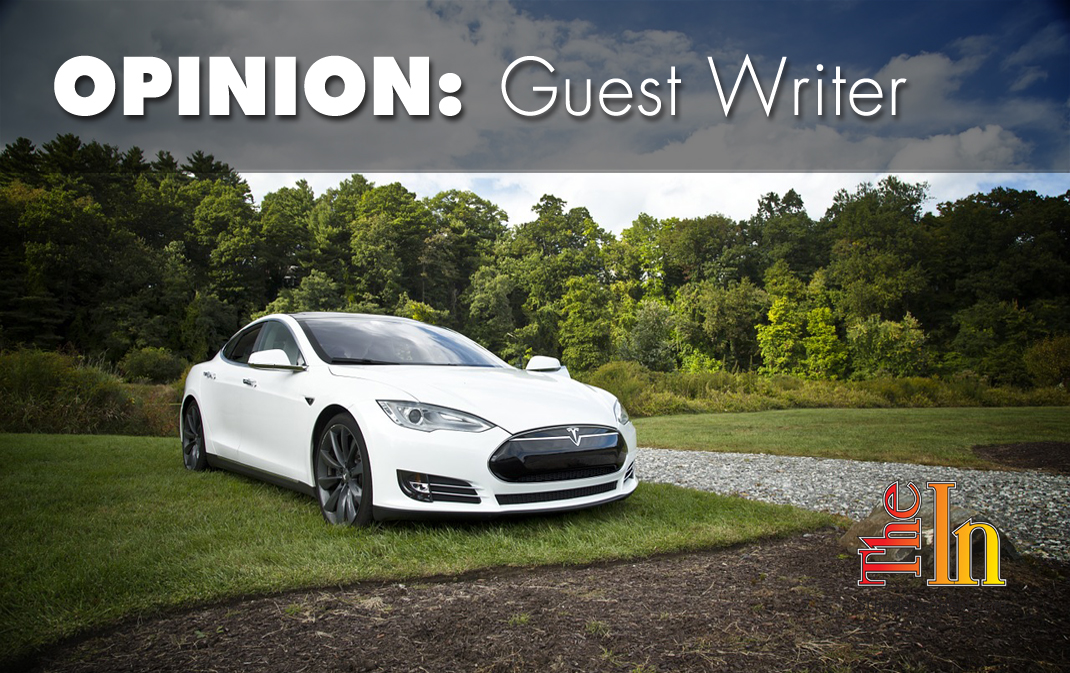
Electric vehicle subsidies don’t help the environment
By Drew Johnson
Imagine taxing middle-class families to help rich folks buy luxury cars. Doesn’t sound very fair, does it?
Yet that’s exactly what’s happening across the United States. Currently, anyone who buys an electric vehicle receives a federal tax credit ranging from $2,500 to $7,500, depending on the vehicle’s battery capacity. Ninety percent of these credits go to the top 20 percent of income earners. And many states offer additional tax credits.
This “reverse-Robin-Hood” approach, which will cost taxpayers $20 billion over the next decade, would potentially make sense if electric vehicles were vastly better for the environment. But they’re not. In some cases, electric cars actually cause more carbon emissions than traditional gasoline-powered vehicles.
It’s time to phase out these unjustifiable tax breaks for the wealthy.
California kicked off EV tax breaks in the early 1990s with its Low Emitting Vehicle Rule, which aimed to make 10 percent of the state’s cars electric by 2003. But despite almost $450 million in EV rebates, only about 1 percent of cars on California’s roads currently qualify as zero emissions vehicles.
Undeterred by California’s lackluster results, Maine, Massachusetts, New Jersey, New York, Rhode Island, and Vermont have all adopted similar policies.
Some states offer rebates as large as $5,000 for buying an electric vehicle while others offer free public charging stations — courtesy of the taxpayer, of course. Once local, state, and federal tax credits are taken into account, some EV buyers receive as much as $15,000.
Subsidizing EVs disproportionately helps wealthy Americans. Almost 80 percent of EV federal consumer tax credits go to households making more than $100,000 a year.
At a time when the federal deficit is approaching $1 trillion, many states’ pension systems are deeply underfunded and millions of Americans struggle to put food on the table, is it really a wise use of taxpayer dollars to help affluent families purchase a $130,000 Tesla?
EVs don’t help the environment much. Although they produce zero emissions once on the road, battery production for a single EV can emit up to 17.5 metric tons of carbon dioxide. That’s equivalent to the CO2 emissions released from over 1,900 gallons of gasoline.
When EVs are charged with electricity generated at dirty coal-fired power plants, they can actually produce more total emissions than certain gasoline-powered cars.
In other words, EVs don’t necessarily eliminate carbon pollution; they just shift the source of those emissions from the tailpipe to the power plant. Between 2018 and 2050, EVs will achieve a net CO2 emissions reduction of just “one-half of one percent of total forecast U.S. energy-related carbon emissions,” according to economic consultant Jonathan Lesser, author of a recent EV report published by the Manhattan Institute.
Any CO2 emissions reduction, no matter how small, is welcome. But there are better ways to “go green” than funding shiny new toys for America’s upper class.
Promoting the shift from coal to natural gas in the electricity sector would be far more effective. Thanks to the fracking boom, American natural gas production has shot up 50 percent since 1990. Natural gas is cheaper than coal. As a result, many utility companies have switched from coal to cleaner-burning natural gas. Shuttering high-emitting coal-powered plants and replacing them with natural gas plants has helped reduce U.S. CO2 emissions to 25-year lows.
Electric vehicle subsidies aren’t making America noticeably greener. They’re just padding rich people’s pockets.
Drew Johnson is a senior fellow at the National Center for Public Policy Research. This piece originally ran in the Austin American-Statesman.
The viewpoints expressed above are those of the author and do not necessarily reflect those of The Independent.
How to submit an article, guest opinion piece, or letter to the editor to The Independent
Do you have something to say? Want your voice to be heard by thousands of readers? Send The Independent your letter to the editor or guest opinion piece. All submissions will be considered for publication by our editorial staff. If your letter or editorial is accepted, it will run on suindependent.com, and we’ll promote it through all of our social media channels. We may even decide to include it in our monthly print edition. Just follow our simple submission guidelines and make your voice heard:
—Submissions should be between 300 and 1,500 words.
—Submissions must be sent to editor@infowest.com as a .doc, .docx, .txt, or .rtf file.
—The subject line of the email containing your submission should read “Letter to the editor.”
—Attach your name to both the email and the document file (we don’t run anonymous letters).
—If you have a photo or image you’d like us to use and it’s in .jpg format, at least 1200 X 754 pixels large, and your intellectual property (you own the copyright), feel free to attach it as well, though we reserve the right to choose a different image.
—If you are on Twitter and would like a shout-out when your piece or letter is published, include that in your correspondence and we’ll give you a mention at the time of publication.
Articles related to “Electric vehicle subsidies don’t help the environment”
PacifiCorp and Rocky Mountain Power miss renewable energy opportunities



